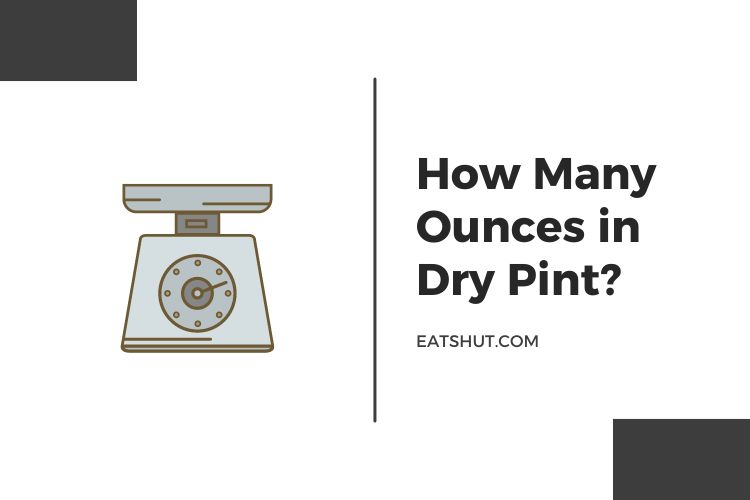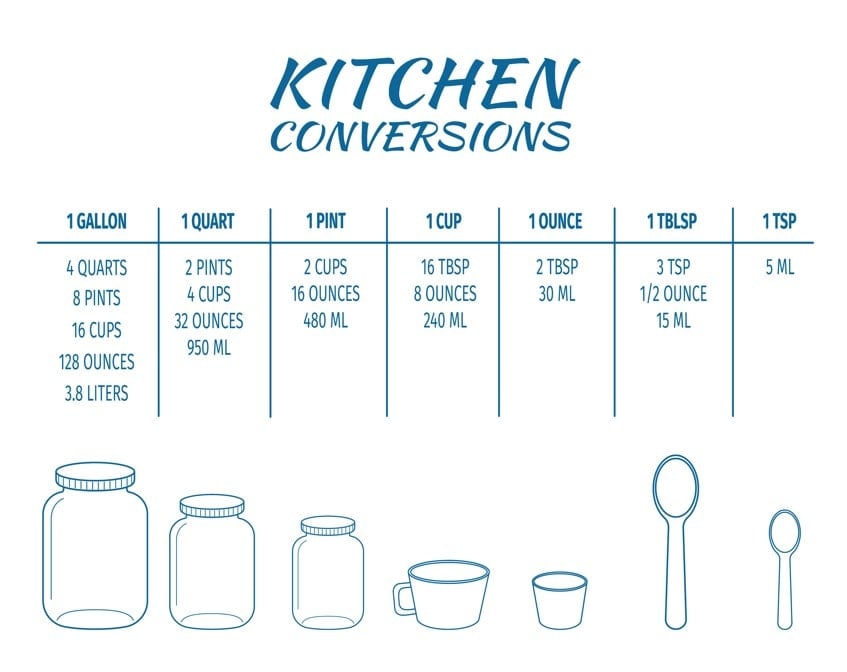How Many Dry Ounces Are In A Pint? Your Ultimate Guide
Alright, let’s dive into something super practical here: how many dry ounces are in a pint? If you’ve ever found yourself scratching your head at the kitchen counter or staring blankly at a recipe book, you’re definitely not alone. Measurements can be confusing AF, especially when you’re dealing with dry ounces, fluid ounces, and pints all in one breath. But don’t sweat it—we’re about to break this down in a way that’ll make you feel like a kitchen pro in no time.
Now, before we get into the nitty-gritty, let me tell you why this matters. Whether you’re baking your grandma’s famous apple pie or whipping up a batch of homemade granola, getting your measurements right is key. A pint might seem like a simple unit, but trust me, it can throw you for a loop if you don’t know the ins and outs. So, buckle up because we’re about to decode this measurement mystery once and for all.
Here’s the deal: we’ll cover everything you need to know about pints, dry ounces, and how they relate to each other. By the end of this article, you’ll be able to confidently answer the question “how many dry ounces are in a pint?” without breaking a sweat. Let’s get to it!
Table of Contents:
- What Is a Pint?
- Dry vs. Fluid Ounces: What’s the Difference?
- How Many Dry Ounces Are in a Pint?
- Converting Measurements Made Easy
- Common Recipes That Use Pints
- Tips for Accurate Measuring
- Frequently Asked Questions
- A Brief History of Measurements
- Tools for Accurate Measurement
- Conclusion
What Is a Pint?
Alright, let’s start with the basics. A pint is a unit of measurement commonly used in the U.S. and the U.K., but here’s where it gets interesting—it’s not always the same. In the U.S., a pint equals 16 fluid ounces, while in the U.K., it’s a bit larger at 20 fluid ounces. So, if you’re following a recipe from across the pond, make sure you double-check those units!
Now, when we talk about pints in the context of dry ounces, things get even more nuanced. Unlike liquid measurements, dry ingredients don’t always behave the same way, so we need to account for that. But don’t worry—we’ll get into all that juicy detail in just a sec.
- Hintere Schulter Trainieren Die Besten Bungen Fr Dich
- Lustige Mittwoch Bilder Dein Humorkick Fr Die Wochenmitte
Dry vs. Fluid Ounces: What’s the Difference?
Here’s where a lot of people trip up. A fluid ounce measures volume, while a dry ounce measures weight. That means a cup of flour and a cup of water might both be “one cup,” but their weights are totally different. Get it? Got it? Good.
Why Does This Matter?
When you’re cooking or baking, precision is everything. Using the wrong type of measurement can throw off your recipe big time. For example, if a recipe calls for 8 fluid ounces of milk, you wouldn’t want to use 8 dry ounces of flour instead. Trust me, that cake ain’t gonna turn out so pretty.
How Many Dry Ounces Are in a Pint?
Okay, here’s the big reveal: a pint contains approximately 18.6 dry ounces. But wait—why is it an approximation? Well, because the weight of dry ingredients varies depending on what you’re measuring. For instance, a pint of flour will weigh less than a pint of sugar due to differences in density.
So, if you’re working with specific ingredients, it’s always a good idea to consult a reliable conversion chart. Here’s a quick breakdown to help you out:
- 1 pint of flour ≈ 4.4 cups ≈ 18.6 dry ounces
- 1 pint of sugar ≈ 3.5 cups ≈ 22.4 dry ounces
- 1 pint of rice ≈ 2.5 cups ≈ 15 dry ounces
Converting Measurements Made Easy
Let’s face it—converting measurements can feel like solving a math problem sometimes. But with a few simple tricks, you can make the process a breeze. Here’s what you need to know:
Key Conversion Tips
First, remember that 1 pint equals 16 fluid ounces. If you’re working with dry ingredients, use the approximate conversion of 1 pint = 18.6 dry ounces. For more precise measurements, grab yourself a kitchen scale—it’s your best friend in the kitchen.
Also, don’t forget about metric conversions! If you’re dealing with recipes from other parts of the world, you might need to switch between cups, grams, and milliliters. A handy conversion chart or app can save you a ton of time and headaches.
Common Recipes That Use Pints
Now that you’ve got the basics down, let’s talk about some recipes where pints play a starring role. Whether you’re making soup, baking bread, or whipping up a batch of chili, understanding pint measurements is crucial. Here are a few examples:
- Chicken Noodle Soup: A classic pint-sized recipe that feeds the soul.
- Homemade Bread: Perfect for mastering dry ounce conversions.
- Spaghetti Sauce: A pint of tomatoes goes a long way in this hearty dish.
Tips for Accurate Measuring
Measuring ingredients accurately can make or break your dish. Here are some pro tips to help you get it right every time:
- Use a kitchen scale for dry ingredients—it’s the most accurate method.
- Level off your dry ingredients with a knife to ensure consistency.
- For liquids, always use a clear measuring cup with graduated markings.
Frequently Asked Questions
Got more questions? We’ve got answers. Here are some FAQs about pints and dry ounces:
Q: Can I use a liquid measuring cup for dry ingredients?
A: Not really. Liquid measuring cups are designed for volume, while dry measuring cups are better for weight. Stick with the right tool for the job.
Q: Is a pint always 16 ounces?
A: In the U.S., yes. But in the U.K., a pint equals 20 fluid ounces, so keep that in mind if you’re following international recipes.
A Brief History of Measurements
Ever wonder where all these weird units of measurement came from? The history of measurements is actually pretty fascinating. Back in the day, people used body parts, like hands and feet, to measure things. Over time, standardized systems like the metric system and imperial system were developed to make trade and commerce easier. Who knew math could be so interesting?
Tools for Accurate Measurement
If you’re serious about cooking and baking, investing in the right tools is a must. Here are a few essentials:
- Kitchen Scale: Perfect for weighing dry ingredients.
- Measuring Cups and Spoons: Essential for volume-based measurements.
- Graduated Measuring Jars: Ideal for liquids.
Conclusion
So, there you have it—everything you need to know about how many dry ounces are in a pint. Whether you’re a seasoned chef or a kitchen newbie, mastering these measurements will take your cooking game to the next level. Remember, precision is key, so don’t be afraid to use a scale or consult a conversion chart when in doubt.
Now, here’s your call to action: take what you’ve learned and put it into practice. Try out a recipe that uses pints, and see how your newfound knowledge transforms your cooking experience. And don’t forget to share this article with your friends—they’ll thank you for it later!
Happy cooking, and may all your recipes turn out as delicious as they should be!
- Guten Morgen Mein Schatz Romantische Bilder Sprche
- Kreuzwortrtselhilfe Leere Mit 6 Buchstaben Die Besten Lsungen

How Many Ounces In A Pint? Pint Cooler Manufacturer

How Many Ounces in Dry Pint?

How Many Ounces in a Pint Exploring the Conversion Lauren’s Latest